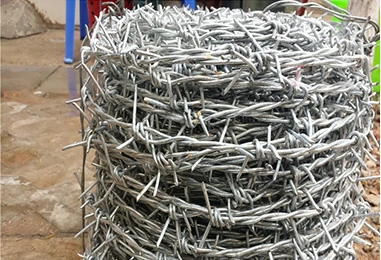 TEL:
+86-13102802206
TEL:
+86-13102802206
 Email:
fencenetting@china.com
Email:
fencenetting@china.com
 Language
Language
 TEL:
+86-13102802206
TEL:
+86-13102802206
 Email:
fencenetting@china.com
Email:
fencenetting@china.com
 Language
Language


The Versatility and Strength of Steel Welded Wire
Steel welded wire is a remarkable material that has gained significant popularity across diverse industries due to its strength, durability, and adaptability. This type of wire is created by welding together individual steel wires at intersecting points, forming a grid-like structure that can be tailored to fit specific applications. Its robust characteristics make it suitable for a wide range of uses, from construction to agriculture, and even decorative purposes.
One of the most prominent advantages of steel welded wire is its exceptional strength. The welding process enhances the structural integrity of the wire, allowing it to withstand heavy loads and resist deformation under stress. This property is crucial in construction applications, where safety and durability are paramount. Steel welded wire is commonly used in concrete reinforcement, forming a reliable framework that improves the tensile strength of concrete structures. With its ability to bear considerable weight, it helps to prevent cracking and collapsing, ensuring the longevity of buildings, bridges, and other infrastructure.
Beyond construction, steel welded wire is also widely employed in the agricultural sector. Farmers and ranchers utilize this material for various applications, including fencing and animal enclosures. The robust nature of steel welded wire makes it an ideal choice for containing livestock and protecting crops from predators. Unlike traditional fencing materials, welded wire fences are less likely to sag or break, providing a long-lasting solution that can withstand the harshest environmental conditions. Additionally, the visibility of the welded wire allows for better surveillance of livestock, ensuring their safety and security.

In addition to practical uses, steel welded wire can also serve aesthetic purposes. Designers and architects often incorporate this material into their projects to create visually appealing structures. From decorative fencing to artistic installations, the versatility of steel welded wire allows for endless creative possibilities. The clean lines and geometric patterns formed by the welded wires can enhance the beauty of a property while maintaining functionality.
Another significant benefit of steel welded wire is its cost-effectiveness. When compared to other materials, steel welded wire offers a balance of affordability and performance. It is relatively inexpensive to produce, and its durability translates to lower maintenance costs over time. For businesses and individuals looking to maximize their investment, choosing steel welded wire can lead to significant savings while delivering high-quality results.
The benefits of steel welded wire extend to its environmental impact as well. Steel is a recyclable material, making it an eco-friendly choice for various applications. By opting for welded wire products, consumers can contribute to sustainability efforts while enjoying the reliability of a long-lasting material. Moreover, the production process of steel welded wire is relatively efficient, which contributes to reduced energy consumption and waste.
In conclusion, steel welded wire stands out as a highly versatile material that serves numerous functions across multiple industries. Its strength and durability make it an essential component for construction and agricultural applications, while its aesthetic potential and cost-effectiveness further enhance its appeal. As industries continue to evolve and seek sustainable materials, steel welded wire is poised to remain a preferred choice due to its robust characteristics and adaptability. Whether for reinforcing a building, enclosing livestock, or creating artistic designs, steel welded wire remains a vital resource that meets the demands of modern society. As we move forward, embracing the benefits of this material can lead to safer, more efficient, and aesthetically pleasing solutions in various realms of life.